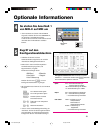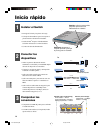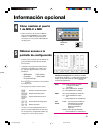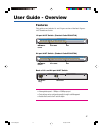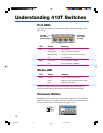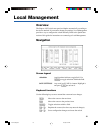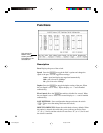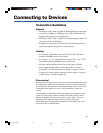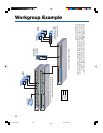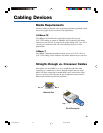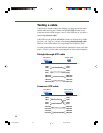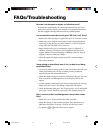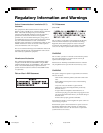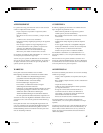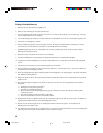
21
Connection Guidelines
General
• The Express 410T switch is capable of autonegotiating port speed and
can operate at 10Mbps or 100Mbps per port. The switch matches the
highest possible speed of an attached device.
• The Express 410T switch is capable of autonegotiating port duplex and
can operate at half- or full-duplex.
• Configure the network so devices that talk to each other primarily are
on the same segment. Each port is a single segment.
Cabling
• Use Category 5 unshielded twisted-pair (CAT 5 UTP) cable when
connecting 100Mbps devices to the switch.
• Use Category 3, 4, or 5 unshielded twisted-pair (CAT 3, 4, or 5 UTP)
cable when connecting 10Mbps devices to the switch.
• Limit the cable length between devices to 100 meters (330 feet).
• Use a straight-through cable to connect the switch to a server or
workstation. For more information on cabling, see pages 23 and 24.
• To connect to another switch or hub use crossover cables, or set port 1
to MDI and use a straight-through cable.
Flow control
During times of heavy network activity the switch’s port buffers can receive
too much traffic and fill up faster than the switch can send the information.
In cases like this, the switch must tell the transmitting device to wait so the
information in the buffer can be sent. This intervention is called flow
control.
You can enable or disable flow control for each port on the Express 410T
switch. By default, flow control is enabled. The method of flow control
depends on whether the ports are set to full- or half- duplex. If a port is
operating at half-duplex the switch sends a collision causing the
transmitting device to wait. If the port operates at full-duplex, the switch
sends out an 802.3x PAUSE frame.
Connecting to Devices
410T Guide.p65 4/7/99, 3:31 PM21



